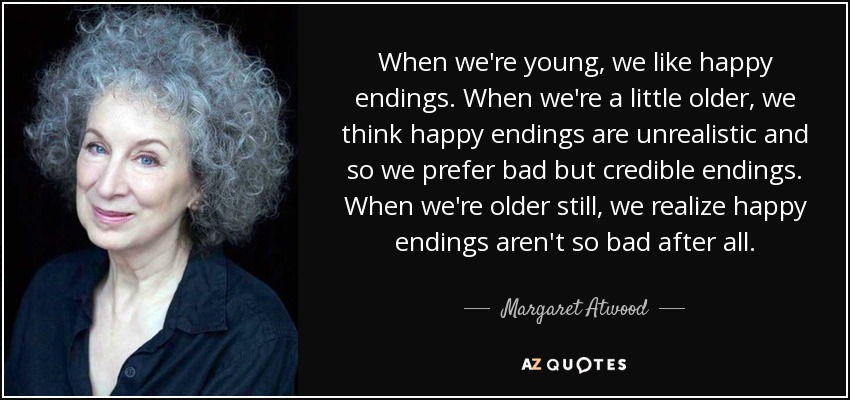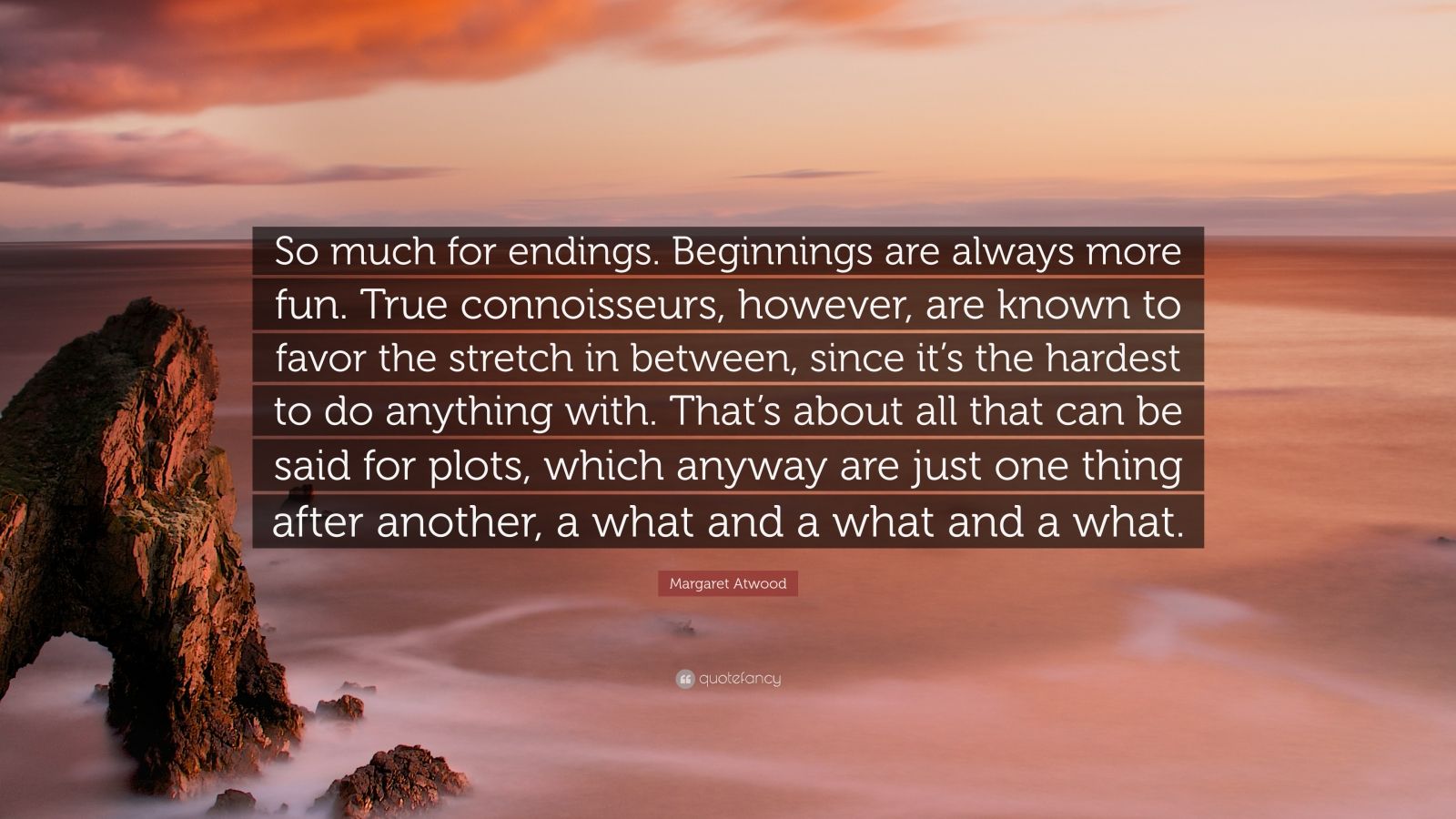
#Happy endings margaret atwood inspiration how to
Next Section Literary Elements Previous Section Imagery Buy Study Guide How To Cite in MLA Format GradeSaver "Happy Endings Metafiction". In so doing, "Happy Endings" becomes a commentary on the nature of writing, reading, and storytelling more generally, encouraging readers to think about what elements of fiction are most important, most meaningful, and most likely to intrigue an audience. When a play "breaks the fourth wall," it draws attention to the audience, thereby drawing attention to the fact that what is occurring on stage is being performed rather than actually happening.Ītwood makes use of this now conventional theatrical tool in her own story, breaking the fourth wall of fiction by frequently referring directly to the reader and by structuring her story in such a way that it is impossible to interpret as a single narrative. By maintaining the fourth wall, actors maintain the fiction of the drama, presenting it as a phenomenon entirely separate from the presence of the audience. In many ways, metafiction shares a dramatic counterpart with the concept of the "fourth wall." In drama, the "fourth wall" refers to an imaginary wall (alongside the typical three walls of a theater) that exists between the actors on stage and the audience. Metafictional works deliberately draw attention to the fact that they are being curated by an author or artist they ask the reader to recognize the artificiality or constructed nature of the work rather than attempting to immerse readers in a believable but unreal world. It is therefore considered a piece of metafiction, or fiction written about other fiction. We pass through everything, and if we have a life like the A version of course you will have a happy ending because you did everything you wanted, you have the life you wanted with your husband and kids and when you live everything in the end you pass away knowing that you have your happy ending." Happy Endings" is a short story about short stories, or about the writing process more generally. In addition, inspiration is also lacking, so there are only a few options: do not write a scientific work write it badly delegate these responsibilities to other people.

This is what happens in real life, those are the “happy endings” you achieve. In the end of the story it results that they all died and that they all ended like as in A.

Does death means a bad ending? A happy ending is how your life was before you die. In those stories they use “and they lived happily ever after” when we know that every person dies, that death is the only thing we have guaranteed in life. This story is something that happens in real life, it’s not a fairy tale story that doesn’t mention death.
#Happy endings margaret atwood inspiration free
Life sometimes doesn’t come the way we want, but everything that happens in your life has a purpose and later you will see the results, from those things we learn and it helps us reach the life we want. Free Essay: In Atwoods Happy Endings the slightest factor like age, job, and personality can change the outcome of a story but no matter what, the ending. John is happy to benefit from Mary's cooking and cleaning, but he contributes nothing to the relationship or to her sense of self-worth. This is a statement about the way some men devalue women and use them only for sex. Some people need to pass through multiple plots you can call them obstacles, disappointments or betrayals, to have the life or find the perfect love and achieve the version A. You'll notice that he doesn't even consider her worth the price of a dinner out. As you can see in the story the other versions didn’t have a good life but in the end of each one it result like as in A. Not everybody gets the A from the first start.

Each story has a different version but now, what is the purpose of this? What is the lesson? Everyone in life wants the A version, the one that you fall in love and get married, have a charming house, great kids, they retire and eventually they die. As a child Atwood spent time in the woods of Ontario and Quebec, where her father, an entomologist.

The story offers six alternative storylines which feature a relationship between a man and a woman. Born in Ottawa, Canada, on November 18, 1939, Margaret Atwood is recognized as a prolific Canadian writer who has published in multiple genres, including poetry, essays, nonfiction, short stories, and novels. In the story of “Happy Ending” by Margaret Atwood, you can see that is a story that has multiple plots. ‘Happy Endings’ is a short story (or, perhaps more accurately, a piece of metafiction) which was first published in Margaret Atwood’s 1983 collection, Murder in the Dark.


 0 kommentar(er)
0 kommentar(er)
